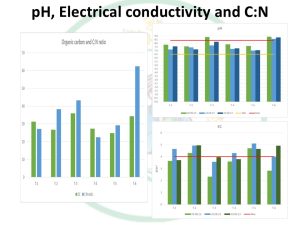Biogas digestate product development
- Home
- Biogas digestate
Biogas - Digestate
Anaerobic digestion is a remarkable and versatile biological process that can convert a diverse array of feedstocks into valuable resources. This includes plant biomass, animal manure, agricultural residues, municipal waste and any other biodegradable wastes. The end product of this process is known as digestate, which is the residue left after the anaerobic digestion of biodegradable material.
The transformation that occurs post-digestion is particularly noteworthy. Raw digestate, when enhanced with the right treatments and enrichment processes, can be converted into a nutrient-rich fermented organic fertilizer. This treated product holds the potential to significantly improve soil health and enhance crop production. The benefits of such organic fertilizers extend beyond nutrient supply; they contribute to the structure, moisture retention, and overall quality of the soil.



OUR EXPERTISE
Locations
- TAMIL NADU
- KARNATAKA
- MADHYA PRADESH
- UTTAR PRADESH
- PUNJAB
Feedstock
- Pressmud
- Municipal Solid waste
- Paddy Straw
- Animal Manure
- Mixed feed





OUR SERVICES
- Understanding the feedstock and the digestate treatment process
- Detailed analysis of digestate
- Lab scale trials and experiments focusing on best treatment
- Development of product based on the results obtained from the lab trials
- Field scale product development of fermented organic manure – comply with Fertilizer control order (FCO) standards
- Workshop and training on technical aspects related to product benefits, methods and practices.
- Knowledge sharing to educate farmers and dealers
- Technical guidance and supervision on field scale product development
- Supply of required materials for nutrition balancing and enrichment
- Technical guidance on organic fertilization – dosages and application
- Support in conducting field trials and product promotion
- Customization of product based on specific crops and conditions
- Marketing strategies and Sales support
Why Digestate need further treatment?
Standards (Issued by the regulatory commission / Government) typically regulate components like nutrient content, pathogen levels, heavy metals, contaminants, and other quality parameters to ensure the fertilizer's effectiveness and safety.
Nutrient levels that are too high, too low, or imbalanced.
For instance, excessive nitrogen can lead to nutrient leaching and groundwater contamination, while low nutrient content reduces the fertilizer's effectiveness.
Important physical parameters include, moisture content, particle size, texture, bulk density, water holding capacity, stability, maturity and odor.
Improper pH (alkalinity) and electrical conductivity (EC) can have several negative effects on soil health, plant growth, and the surrounding environment.
Results in soil nutrient imbalance and salinity, nutrient lockout, reduced crop yields, negative impact on microbial activity, root damage, seed germination and other environmental risks.
Improper C/N ratio alters the below ground microbial consortium and suppresses beneficial microbial activity.










